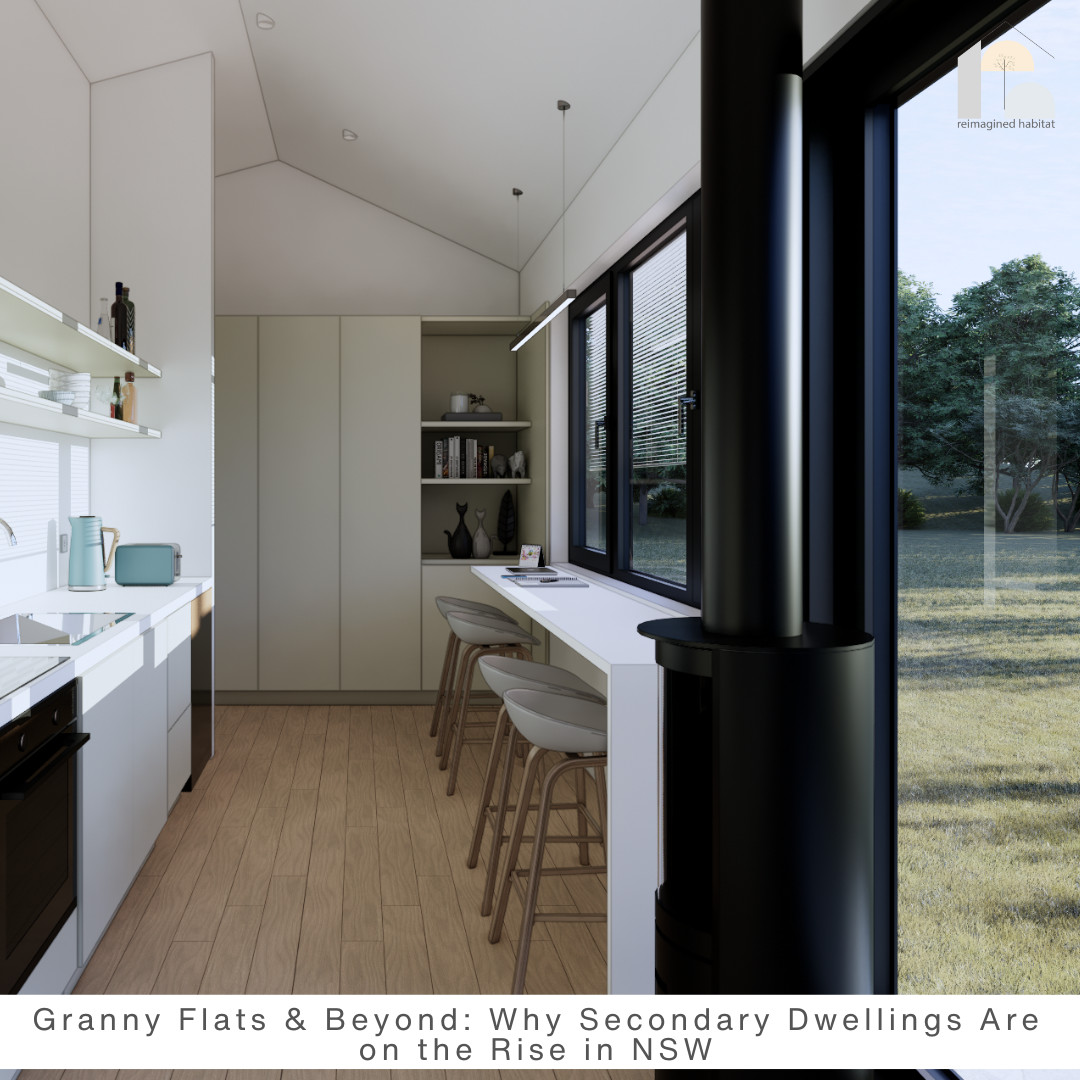Granny Flats & Beyond: Why Secondary Dwellings Are on the Rise in NSW

Housing affordability and availability are major challenges across NSW, with rising property prices and rental shortages making it harder for people to find a home in the right location. As the housing crisis continues, secondary dwellings—or granny flats—are becoming an increasingly popular solution, offering a flexible and cost-effective way to create more housing options without needing to buy new land.
Why Build a Secondary Dwelling in NSW?
Thinking about adding a granny flat to your property? Here’s why it could be a game-changer:
- Keep family close while still enjoying your own space.
- Generate extra income to help with rising living costs.
- Offer an affordable housing option in your community.
- Maximise your land’s potential—no subdivision required!
- Future-proof your home for changing family needs.
Whether it’s for ageing parents, independent teens, or a smart rental investment, a secondary dwelling could be the perfect solution!
Key Regulations for Secondary Dwellings in NSW
1. Definition and Permitted Zones
- A secondary dwelling is a self-contained residence located on the same lot as the primary dwelling.
- It can be within, attached to, or separate from the main home.
- These dwellings are permitted in residential zones R1, R2, R3, R4, and R5, with some councils allowing them in additional zones.
2. Property Requirements
- Minimum lot size: 450 square metres.
- Minimum lot width: 12 metres at the building line of the existing dwelling. If this isn’t met, an attached secondary dwelling may be required.
3. Size and Layout Constraints
- Maximum internal floor area: 60 square metres.
- Only one secondary dwelling is allowed per lot.
- Subdivision is not permitted, meaning the secondary dwelling cannot be sold separately from the main home.
4. Approval Processes
- Complying Development Certificate (CDC): A fast-track approval process available for properties meeting specific criteria.
- Development Application (DA): If the property does not meet CDC criteria, a full DA must be submitted to the local council.
5. Setback and Height Regulations
- Rear setback: Minimum 3 metres from the rear boundary.
- Side setback: At least 0.9 metres from side boundaries.
- Height restrictions: Generally 8.5 metres, allowing for single or two-storey designs.
- Setback requirements can vary depending on local council regulations and specific site conditions.
6. Parking and Access
- No additional parking is required under state regulations, but local council rules may vary.
7. Utility Connections
- The secondary dwelling must have access to essential utilities, including water, electricity, and sewerage.
- Infrastructure upgrades may be necessary, depending on the property’s existing utility capacity.
8. Bushfire and Flood-Prone Areas
- Properties in bushfire-prone areas may require consultation with the NSW Rural Fire Service.
- Additional flood protection measures may apply in flood-prone zones.
Why Choose a net zero habitat Home for Your Secondary Dwelling?
If you’re considering a secondary dwelling in NSW, opting for a sustainable, energy-efficient solution is a smart investment. Our net zero habitat range offers a collection of beautifully designed, prefabricated homes that prioritise comfort, efficiency, and sustainability.
Key Benefits of a net zero habitat Home:
✅ Energy-Efficient: Designed to minimise energy consumption, reducing reliance on heating and cooling.
✅ Comfortable & Healthy: Superior insulation, airtight construction, and non-toxic materials create a healthier living space.
✅ Prefabricated for Quality & Speed: Factory-built to exacting standards, ensuring a faster, more cost-effective build.
✅ Customisable Designs: Choose from one- and two-bedroom options to suit your needs.
✅ Sustainable & Future-Proof: Built to last, with renewable energy options and reduced environmental impact.
A secondary dwelling is an excellent way to create extra space for family members, generate rental income, or enhance the value of your property. With net zero habitat, you can do it in a way that’s smarter, healthier, and better for the planet.
Find Out More
If you're located in Victoria, check out the regulations for a secondary home here.
If you're based in ACT please click here for more information on secondary dwelling requirements.
Disclaimer: Regulations around secondary dwellings can vary depending on your local council, site conditions, and planning overlays. While we’ve done our best to summarise the general rules, we always recommend speaking with your local council and consulting a qualified designer, architect, or builder to confirm what's possible on your specific property.
